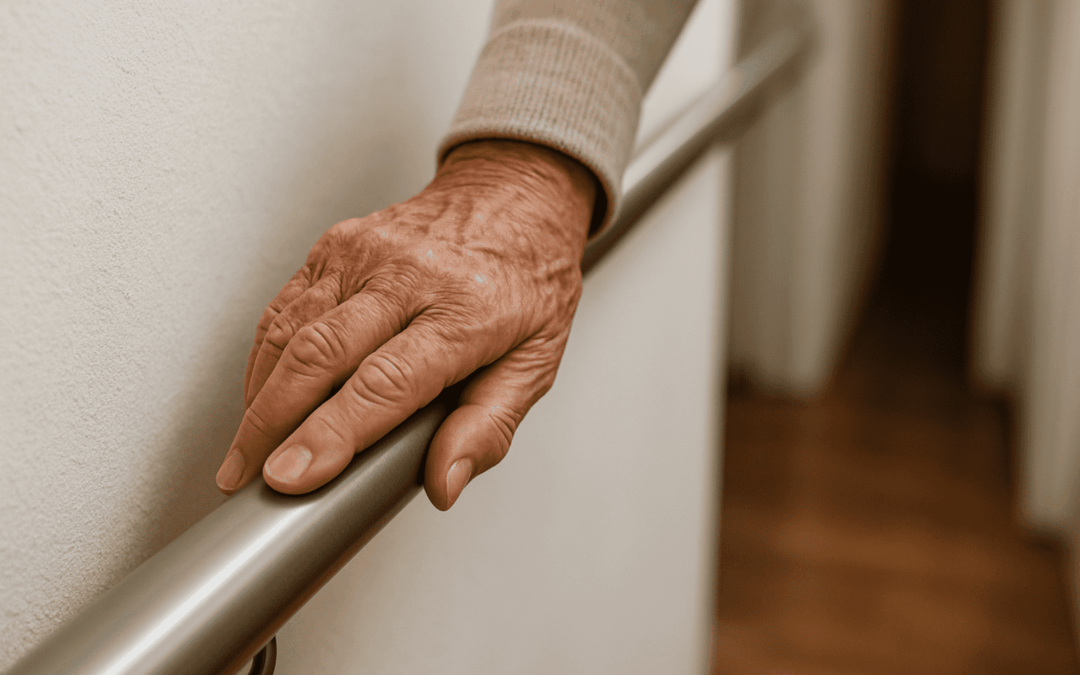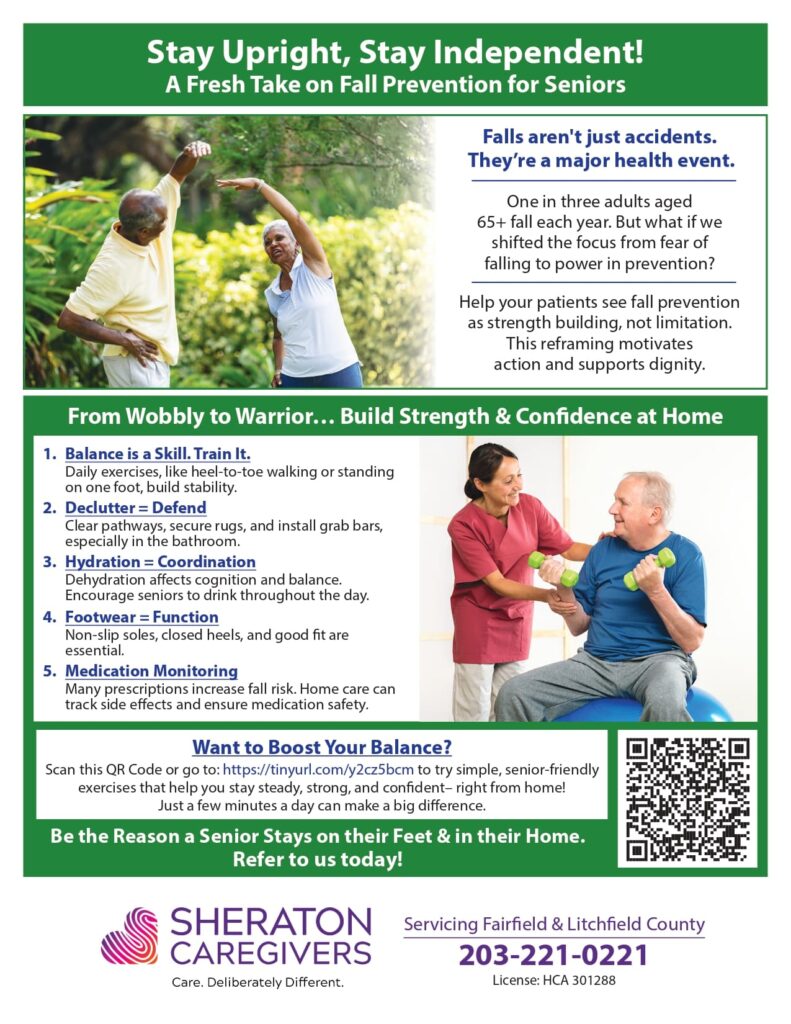Have you ever worried about your loved one taking a fall at home? It happens frequently, and a single moment can change everything. That worry is understandable, especially when it’s someone you care about deeply. Fall prevention at home plays a vital role in helping your loved one stay confident, independent, and comfortable where they feel most secure.
Let’s explore what fall prevention involves and why it matters. We will learn about common types of falls and their causes, so you can recognize potential risks. Plus, some practical steps you can start applying today to improve safety at home – giving you peace of mind.
What’s Fall Prevention, and Why Should It Matter to You?
Fall prevention might sound like a clinical term, but it’s really about everyday choices and simple changes that help protect the people you care about. Did you know that over one in four older adults take a fall each year? And sadly, falls are the leading cause of injury-related deaths for folks aged 65 and up.
The Impact of Falls Extends Beyond Injuries
Falls often cause more than physical harm. Age-related changes in vision, strength, and balance increase the chances of slips and trips. However, falls can also bring fear, social isolation, and may lead to earlier transitions into care settings.
Preventing falls supports your loved one’s confidence, independence, and emotional well-being.
What Causes Falls? Let’s Break It Down
Falls typically result from multiple factors such as the home environment, health conditions, and medications. Understanding these causes helps create an effective prevention plan.
Environmental Hazards to Watch For
Slippery floors, unsecured rugs, poor lighting, or clutter can create risks. Bathrooms, stairs, and kitchens are common hotspots. According to the National Institute on Aging, home setup plays a significant role in fall risk.
Health Conditions That Increase Risk
Balance disorders, muscle weakness, arthritis, and low blood pressure make falls more likely. Vision and hearing difficulties can prevent hazard recognition. Certain medications – especially sedatives and blood pressure medications – can cause dizziness or drowsiness.
Behavioral Factors That Affect Balance
Rushing, wearing inappropriate footwear, or multitasking while walking may lead to falls. Physical inactivity reduces flexibility and balance over time, increasing risk.
Common Ways to Prevent Falls: What Works and What to Consider
There is no single solution for fall prevention. Here are common approaches, along with their benefits and considerations.
| Approach | Benefits | Considerations |
| Home modifications | Improves safety and builds confidence | May require upfront investment (grab bars, stair lifts) |
| Strength & balance exercises | Enhances mobility and lowers fall risk | Requires ongoing commitment and sometimes supervision |
| Medication review | Identifies meds that cause dizziness | Needs collaboration with healthcare providers |
| Assistive devices | Provides extra stability with canes or walkers | Incorrect use may increase fall risk |
| Monitoring tech & alarms | Offers peace of mind for families | Can be costly and depends on reliable technology |
Easy Steps to Improve Home Safety – Room by Room
Here are simple, practical steps you can take right now, organized by room.
- Bathroom
- Install grab bars near the toilet and inside the shower for stability.
- Use non-slip mats and consider a shower chair.
- A raised toilet seat can make sitting and standing easier.
- Bedroom
- Ensure sufficient lighting along the path between bed and bathroom.
- Keep a lamp within easy reach.
- Remove clutter and secure loose rugs or cords.
- Living Areas
- Arrange furniture to allow wide, clear walking paths.
- Remove or tape down rugs that may cause trips.
- Place frequently used items within easy reach.
- Stairs
- Install handrails on both sides and provide bright lighting.
- Highlight step edges with bright, contrasting tape.
- General Tips
- Schedule annual vision and hearing exams.
- Review medications with healthcare providers for side effects like dizziness.
- Encourage balance exercises such as Tai Chi.
How Families and Caregivers Can Help
Families play an important role in fall prevention. Here’s how you can support your loved ones:
- Communicate openly: Ask if they feel unsteady or concerned about falling.
- Observe carefully: Notice if they avoid stairs, hold onto furniture, or hesitate to move.
- Act early: Don’t wait for a fall. Healthcare providers can assess risk and recommend strategies.
You are not alone in this process. Organizations like Sheraton Care specialize in helping families create safe, supportive environments. Their caregivers focus on fall prevention to help your loved one remain confident and independent at home.
Small Changes Today Can Prevent Big Problems Tomorrow
Protecting your loved ones from falls is a crucial step toward maintaining their health and independence. By understanding risks, making targeted home adjustments, and encouraging healthy habits, you reduce the chance of injury.
The key message: simple changes – like installing grab bars or supporting balance exercises – can prevent serious setbacks. These steps help seniors stay active, safe, and in control of their lives.
If you need guidance or support, Sheraton Care is ready to assist your family every step of the way. Together, you can create safer homes and stronger futures – one fall avoided at a time.


